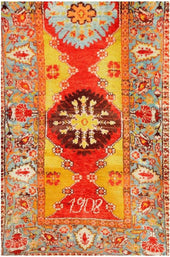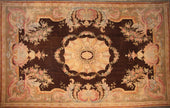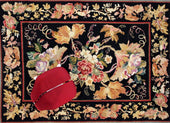Interior Design Tips for Choosing the Perfect Rug
Introduction
Carpets and rugs are more than just decorative elements; they are essential components of a room’s design that can influence the overall atmosphere, function, and perception of space. When used correctly, they can tie a room together, define areas within a larger space, and add comfort and warmth. However, to achieve these benefits, it's important to follow some key interior design rules when selecting and placing carpets and rugs.
Size Matters
One of the most important rules in interior design is ensuring that the size of your rug is proportionate to the room and the furniture layout. A common mistake is using a rug that is too small for the space. In a living room, the rug should be large enough to at least touch the front legs of all major pieces of furniture, such as sofas and chairs. Ideally, all the furniture should sit on the rug, or at the very least, the rug should extend beneath the front legs. For dining rooms, the rug should be large enough to fit under the table and chairs, even when the chairs are pulled out.
Choosing the Right Material
The material of the rug should be selected based on the room’s function. High-traffic areas like hallways, entryways, or living rooms require durable materials that can withstand wear and tear, such as wool, sisal, or cotton blends. For more formal areas like dining rooms or bedrooms, luxurious materials like silk or high-quality wool can be appropriate, adding an element of elegance and comfort. Additionally, consider the ease of cleaning, especially if you have pets or children.
Color and Pattern
Carpets and rugs are an opportunity to introduce color and pattern into a space, but balance is key. A rug can either complement or contrast with the existing color scheme of the room. If the furniture and walls are more neutral, a bold rug can serve as a focal point. Conversely, if the room is already vibrant, a more subdued rug can provide visual harmony. When it comes to patterns, large rooms can handle larger, more complex patterns, while smaller spaces may benefit from simpler designs to avoid feeling cluttered.
Defining Spaces
Rugs are excellent tools for defining different areas within an open-plan space. For example, in a large living room, a rug can delineate the seating area from the dining area or an office nook. The key is to choose a rug that fits the area’s purpose and size. In some cases, using multiple rugs in a single room can help to create a sense of distinct zones, but ensure they coordinate well to maintain a cohesive overall look.
Comfort and Acoustics
Beyond aesthetics, rugs also play a functional role in enhancing comfort and improving acoustics. A plush, high-pile rug can make a living room or bedroom feel cozy and inviting, while a flat-weave or low-pile rug might be better suited for an office or dining area where ease of movement is essential. Additionally, rugs help to absorb sound, reducing echoes and creating a more intimate atmosphere, especially in rooms with hard flooring like wood or tile.
Maintenance Considerations
Lastly, consider the maintenance of the rug. High-pile rugs may look luxurious but can be harder to clean, trapping dust and allergens more easily. For areas prone to spills or dirt, such as dining rooms or entryways, opt for rugs that are easy to clean or have patterns that can hide stains. Regular maintenance, including vacuuming and professional cleaning, will ensure that your rugs remain in good condition and continue to enhance your space.
Conclusion
By carefully selecting the right rugs and following these interior design rules, you can significantly elevate the style, function, and comfort of your home. Rugs are versatile design elements that, when used thoughtfully, can transform any room into a more cohesive, inviting, and aesthetically pleasing environment.
Elevate your home—explore our wide selection of rugs today!









